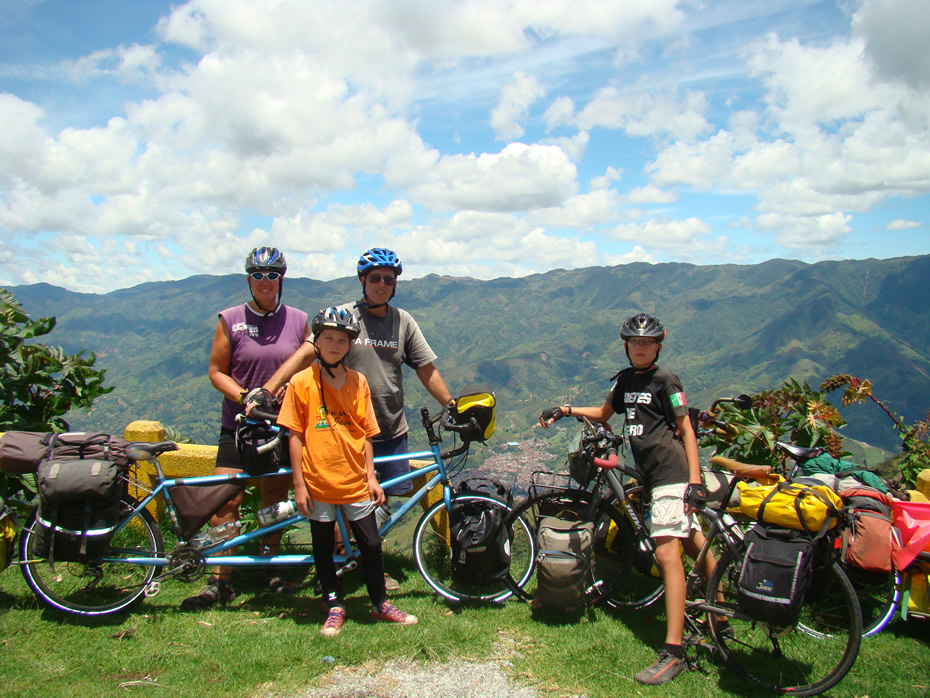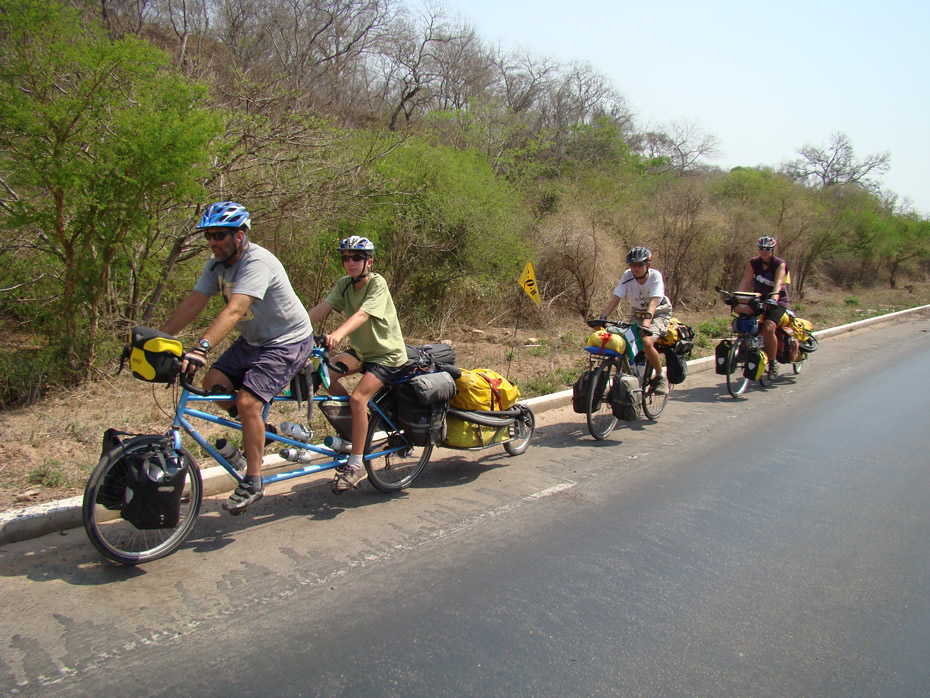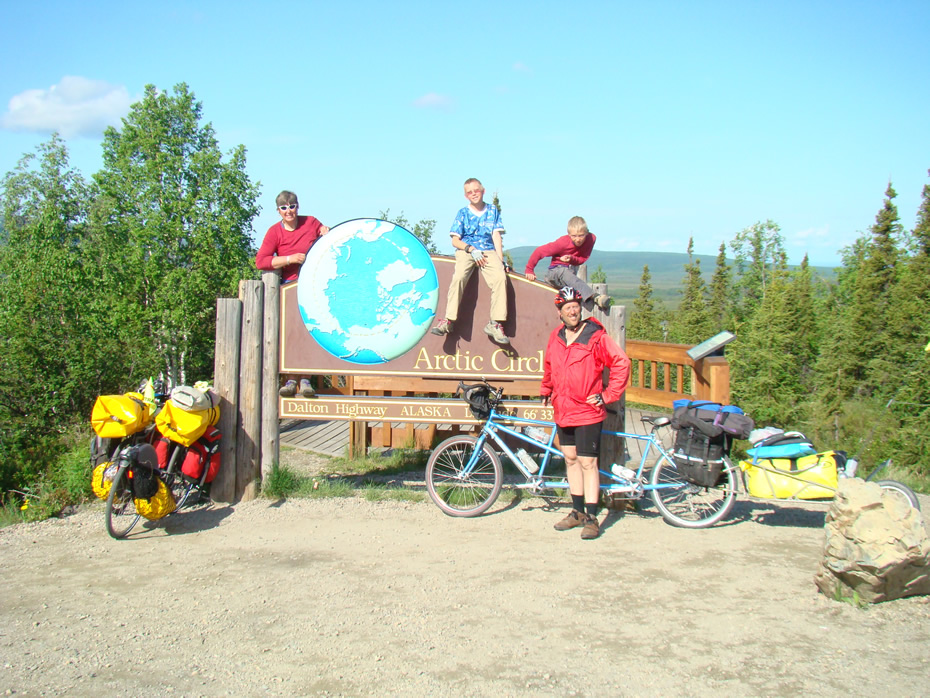Plan a week in the wilderness with your kids and chances are you will spend a month organizing and gathering supplies. Spend a year or more in the wilderness and your planning starts to assume NASA prelaunch proportions. So how do you plan for medical emergencies on a long trip through multiple wilderness areas across states, countries, or even continents with children? The answer isn't easy. Some would argue for detailed pre-trip planning with a travel practitioner, supplies to cover all anticipated emergencies, contact information for local practitioners, a list of medical facilities along the way, and an Everest sized medical kit. Others, like Nancy Sathre-Vogel, take a more relaxed approach.
The Sathre-Vogel family of Boise, Idaho mounted their bicycles on the most northern point of the Dalton Highway in Prudhoe Bay, Alaska on June 10, 2008, and rode the Pan-American Highway until they reached the southern terminus of South America in Ushuaia, Argentina three years later. They recorded 1,018 days of cycling on 17,285 miles of roads and tracks, through 15 countries, in mostly wilderness areas; a trip that challenged their mental stamina as much as their physical well-being. You can read about their journey in their book called Changing Gears: A Family Odyssey to the End of the World, which is reviewed in our book reviews.
I had a chance to sit down and talk to Nancy about medical emergencies on the trip. She started the conversation by stating, "You can't really prepare." Nancy did not seek advice from a travel practitioner before departing, research country specific diseases, or plan for yearly health and dental maintenance checkups for her family. They also did not pack a large medical kit. She did have a general plan to rely on locals for recommendations on doctors, dentists, and hospitals along the way. She also purchased travel and health insurance.

She believed she had a "solid general knowledge" with regards to first aid from her experience as a teacher, a previously taken first aid course, and extended cycling trips in remote areas of the world. She holds to the theory of making decisions in real time based on the circumstances and trusting the outcome will be good. This philosophy made her comfortable when seeking emergency health care on the fly in developing countries.
Weight and space were considerations when choosing what to pack for medical emergencies. The family anticipated mostly abrasions from falls, so they carried a basic first aid kit with pain relievers, Band-Aids, and antibiotic ointment. They later switched to a roll of gauze and tape for abrasions, which she found worked better. She bought what was needed, when it was needed. For example, it wasn't until a road accident in Albuquerque, N.M., that they added splints and ace bandages to the medical kit, or faced searing heat in Central America that they carried rehydration packets. Nancy believed that if treatments were available for locals it would satisfy their medical needs also. When her husband was ill from altitude illness, he chewed the local remedy of coca leaves.
The family DID encounter a few emergencies. In Albuquerque, a car hit her husband, John, and her son, Daryl. John suffered a leg injury and sprained wrists which they self-treated with the splints. Her other son, Davy, developed infected ingrown toenails that required minor surgery more then once along the way. Nancy herself was hospitalized while in Argentina for pneumonia. Nancy's point was that you couldn't anticipate when and where an emergency occurs, so it is better to free yourself from the worry and instead plan to use local resources based on local recommendations.

Nancy adhered to the general idea that they weren't setting out to break any world records. Along the way the family frequently rested, and took longer breaks involving days and weeks to prevent overuse injuries and mental fatigue. They had time to absorb the regional culture and engage with local inhabitants. When asked about personal safety issues she pointed out, "things can happen at home." She knew from experience people were more likely to protect and help a family than assault them. She and her husband permitted and encouraged their sons to pursue independent activities and exploration.
Many practice Nancy's philosophy, but others prefer a middle road that raises the safety bar. I believe no trip of such proportions is the worse off for emergency planning. Although you can't foresee every medical emergency, you can prepare for extended and complex wilderness trips by visiting a travel medicine consultant, researching location specific illness and injury, locate reputable medical practitioners and facilities at your destinations, and pack a medical kit to treat anticipated problems. The CDC is a good travel medicine resource. Other websites offer specific information on children's travel health such as Kids Travel Doc written by Dr. Karl Neumann, editor emeritus for the WM magazine.

After talking with Nancy, I began to rethink my own wilderness travel methodology of intense planning for every possible medical emergency. Although I still plan to research and pack anticipated medical supplies, the idea of trusting local resources and residents to guide decision-making may not be as off the trail as you think.
Check out the book review of Changing Gears: A Family Odyssey to the End of the World, Sathre-Vogel's account of the whole adventure, in our Book Reviews section!